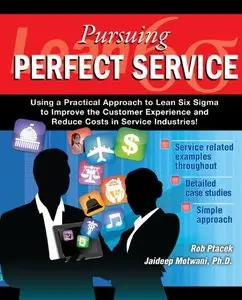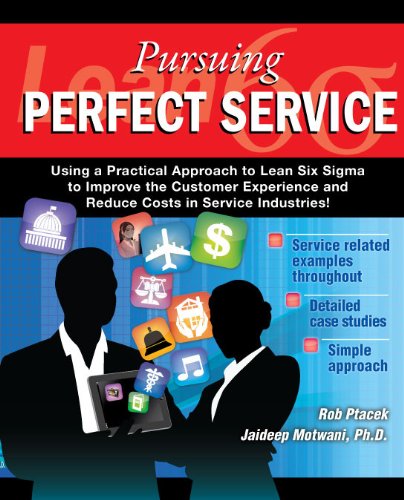Lean Six Sigma for Service - Pursuing Perfect Service - Using a Practical Approach to Lean Six Sigma to Improve the Customer Experience and Reduce Costs in Service Industries by Rob Ptacek, Jaideep Motwani, Ph.D.
2011 | ISBN: 1450766331 | English | 520 pages | EPUB + MOBI | 13 MB + 16 MB
2011 | ISBN: 1450766331 | English | 520 pages | EPUB + MOBI | 13 MB + 16 MB
Pursuing Perfect Service is a comprehensive and detailed set of instructions on how to implement Lean and Six Sigma tools and concepts in a variety of environments. It will provide the solid foundation upon which Lean Sigma tools can be applied in any service organization. Service providers are continually processing daily requests and must know how to identify client needs and expectations, how to best satisfy their needs, and how to do it at the lowest possible cost. This book is a step-by-step implementation guide for continuous improvement while creating a solid foundation upon which to build a service excellence culture. Pursuing Perfect Service also provides insights and examples on how Information Technology can be used to improve data and information flow to enhance the overall client experience, while ensuring organizational profitability. This book has been arranged into four distinct parts. To transform an organization from a traditional service provider to a Lean Sigma for Service Excellence provider, it is recommended that the book be followed in order, from Part One to Part Four. However, it may be useful to review Chapter 10, Transformation Case Study, as it chronicles one company's journey using this approach or methodology. The four parts are: Part One. Setting the Foundation for Lean Sigma for Service Excellence. This part is comprised of two chapters. In chapter one, the readers will be provided with an overview of service organizations and why it is critical for them to achieve excellence. This will be followed by a discussion, in chapter two, of how an organization can achieve excellence by applying the Lean Sigma methodology. By explaining the basic tools and concepts of Lean and Six Sigma, understanding how behavior and change must occur, and determining what measurements and outcomes are critical, will set the foundation for the Lean Sigma journey. Part Two. Beginning the Lean Sigma for Service Excellence Journey. This part is comprised of one chapter that focuses on the four enablers of Lean Sigma and the steps required to build a solid foundation. In order for the Lean Sigma initiative to be successful, all four enablers need to be actively present within an organization. Part Three. Deploying the Lean Sigma for Service Excellence Improvement Process. This part is comprised of five chapters and demonstrates through detailed explanation of the tools, as well as case study examples, on how the Six Sigma's DMAIC methodology can be applied in service industries. Creating processes that allow customer expectations and organizational services to be free of waste will create the foundation for business success. This will entail obtaining detailed analysis of current processes, creating standards to adhere to, and balancing workloads evenly to meet each and every customer demand. This is the heart of Lean Sigma and will take the most time to implement. Part Four. Putting it All Together to Achieve and Sustain Lean Sigma for Service Excellence. This part is comprised of two chapters. The first chapter provides definition and guidance for becoming a sustainable organization. Sustainability is defined in terms of global impact in environmental, economic, and social areas. A plan to reduce environmental impact is often called "becoming green." True sustainability goes beyond the environmental impact only and also considers economic and social areas. This chapter defines the Triple Bottom Line for sustainability, and also details some basic tools for becoming green. The second chapter details an organizational transformation of a traditional service provider to a Lean Sigma for Service Excellence organization.



